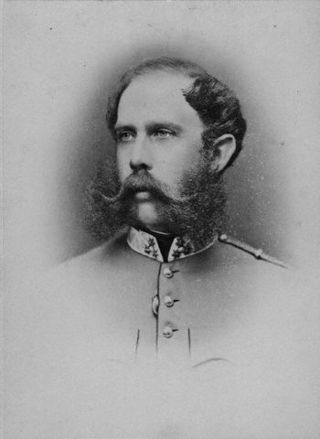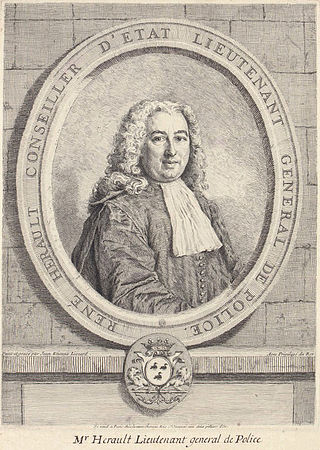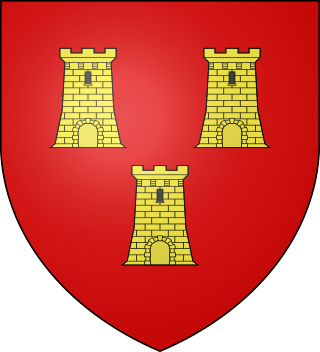
Archduke Franz Karl Joseph of Austria was a member of the House of Habsburg-Lorraine. He was the father of two emperors: Franz Joseph I of Austria and Maximilian I of Mexico. Through his third son Karl Ludwig, he was the grandfather of Archduke Franz Ferdinand of Austria – whose assassination sparked the hostilities that led to the outbreak of World War I.

The House of Lorraine originated as a cadet branch of the House of Metz. It inherited the Duchy of Lorraine in 1473 after the death without a male heir of Nicholas I, Duke of Lorraine. By the marriage of Francis of Lorraine to Maria Theresa of Austria in 1736, and with the success in the ensuing War of the Austrian Succession (1740–1748), the House of Lorraine was joined to the House of Habsburg and became known as the House of Habsburg-Lorraine. Francis, his sons Joseph II and Leopold II, and his grandson Francis II were the last four Holy Roman emperors from 1745 until the dissolution of the empire in 1806. The House of Habsburg-Lorraine inherited the Habsburg Empire, ruling the Austrian Empire and then Austria-Hungary until the dissolution of the monarchy in 1918.

The Three Bishoprics constituted a government of the Kingdom of France consisting of the dioceses of Metz, Verdun, and Toul within the Lorraine region. The three dioceses had been Prince-bishoprics of the Holy Roman Empire until they were seized by King Henry II of France between April and June 1552. At the end of the Thirty Years' War, they were officially ceded to France by the 1648 Peace of Westphalia.

Prince Frederick Louis Christian "Ferdinand" of Prussia, was a Prussian prince, soldier, composer and pianist. Prince Louis Ferdinand fought in the Napoleonic Wars. The 1927 German film Prinz Louis Ferdinand was a biopic of his life.

Archduke Karl Ludwig Josef Maria of Austria was the younger brother of both Franz Joseph I of Austria and Maximilian I of Mexico, and the father of Archduke Franz Ferdinand of Austria (1863–1914), whose assassination ignited World War I. His grandson was the last emperor of Austria, Charles I.

René Hérault, Seigneur de Fontaine-l'Abbé et de Vaucresson, simply known as René Hérault, and sometimes as René Hérault de Vaucresson, was a French magistrate and administrator who served as Lieutenant General of Police of Paris from 1725 to 1739.

Special Section is a 1975 French film directed by Costa-Gavras and based on the novel L'affaire de la Section Spéciale by Hervé Villeré. It stars Louis Seigner, Roland Bertin, Michael Lonsdale, Ivo Garrani, François Maistre, Jacques Spiesser, Henri Serre, Heinz Bennent and Claude Piéplu. It is named after the Special Sections of Vichy France.

Jean-Antoine de Mesmes, comte d'Avaux (1661–1723) was a premier president of the Parlement of Paris and member of the Académie française. As premier president he presided at the rescinding of the will of Louis XIV and in 1720 at the remonstrance against the regent, Philippe of Orléans, for allowing Law's disastrous financial scheme and appointing Guillaume Dubois as archbishop of Cambrai.

Under the French monarchy, the Courts of Accounts were sovereign courts specialising in financial affairs. The Court of Accounts in Paris was the oldest and the forerunner of today's French Court of Audit. They oversaw public spending, handled finances, protected crown estates, audited the accounts of crown officials, and adjudicated any related matters of law.

Claude de Mesmes, comte d'Avaux (1595–1650) was a 17th-century French diplomat and public administrator. He was sent in various missions to Venice, Rome, Germany, Sweden, Denmark, and Poland by Richelieu.

Sire Philippe Van Dievoet called Vandive, écuyer, (1654–1738) was a celebrated goldsmith and jeweller. He was goldsmith to King Louis XIV, councillor of the King, officier de la Garde Robe du Roi, trustee of the Hôtel de ville of Paris, and Consul of Paris.

Jean-Jacques de Mesmes, comte d'Avaux, vicomte de Neufchâtel (1630–1688) was a French magistrate, intendant of Soissons, and Président à mortier of the Parlement of Paris. He developed the town of Avaux-la-Ville, which is now called Asfeld. He was a member of the Académie française. He was brother of Jean-Antoine de Mesmes, the diplomat, and father of Jean-Antoine de Mesmes, the premier president of the Parlement of Paris.

Jean-Henri Claude Mangin was a French magistrate. He was head of the Paris police at the time of the Trois Glorieuses.
Armand Jean d'Allonville was a French nobleman from an old family in Beauce. He was nicknamed le balafré and served as maréchal des Camps et des armées du Roi, commander of the exiled Les Gentilshommes de la province de Champagne, then those of Brittany and the régiment d'Allonville.
Louis de Conflans, marquis d'Armentières was a French general. He was promoted to lieutenant général in 1746 and was made a marshal of France in 1768.

The Saintignon family is a surviving family of the French nobility, a Lotharingian noble family from Verdun, who rose to prominence and solidified their place in the royal courts under the Ancien Régime.

The House of Lannoy is the name of an old and important Belgian noble family that takes its name from the town of Lannoy in northern France. The name comes from l'Annoy, which means 'the alderwood' in Picard French of Flanders.

Anton Carl Ludwig von Tabouillot, né Antoine Charles Louis de Tabouillot, was a French officer, nobleman and counter-revolutionary, who later became a politician in the French satellite state, the Grand Duchy of Berg, where he served as Mayor of Essen under French rule during the Napoleonic Wars from 1811 to 1813.

Louis-Basile de Bernage was a French aristocrat, seigneur of Saint-Maurice, Vaux, and Chassy, and a politician under the ancien régime. From 1743 to 1757, he was the Prévot des Marchands of Paris.

Louis Hesselin, Seigneur de Condé was a French aristocrat, government official, patron and collector. He held various positions in the royal household and became Intendant of the Menus Plaisirs around 1655.





















